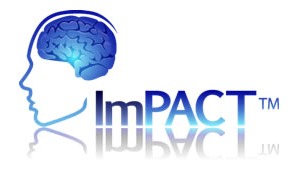Concussion Management
Keeping Athletes Safe, Healthy & Doing What They Love.
Oh come on, they’re just a part of sports–so just dust yourself off and go back in, right? Wrong. Concussions are brain injuries – pure and simple. They account for 3-5% of injuries in all sports combined, from football to gymnastics.
- Each year, U.S. emergency departments (EDs) treat an estimated 173,285 sports– and recreation-related TBIs, including concussions, among children and adolescents, from birth to 19 years. 1
- During the last decade, ED visits for sports- and recreation-related TBIs, including concussions, among children and adolescents increased by 60%. 1
- Overall, the activities associated with the greatest number of TBI-related ED visits included bicycling, football, playground activities, basketball, and soccer. 1
- National surveillance in 9 high school sports: 2
- TBI represents almost 9% of all injuries reported in the 9 sports
- Numbers and rates are highest in football (55,007; 0.47 per 1000 athlete exposures) and girl’s soccer (29,167; 0.36 per 1000 athlete exposures)
- A national survey of all sports- and recreation-related injuries among all ages demonstrates that 31% occurred in a sports facility and 20% in a school facility. 3
Causes and Risk Groups 1
- Children from birth to 9 years commonly sustained injuries during playground activities or while bicycling.
- 71.0% of all sports- and recreation-related TBI emergency department visits were among males.
- 70.5% of sports- and recreation-related TBI emergency department visits were among persons aged 10-19 years.
- For males aged 10-19 years, sports- and recreation-related TBIs occurred most often while playing football or bicycling.
- Females aged 10-19 years sustained sports- and recreation-related TBIs most often while playing soccer or basketball or while bicycling.

 Management Software is a sophisticated research-based software tool developed to help sports-medicine clinicians evaluate recovery following concussion. ImPACT evaluates and documents multiple aspects of neurocognitive functioning including memory, brain processing speed, reaction time, post-concussive symptoms, and an injury documentation system.
Management Software is a sophisticated research-based software tool developed to help sports-medicine clinicians evaluate recovery following concussion. ImPACT evaluates and documents multiple aspects of neurocognitive functioning including memory, brain processing speed, reaction time, post-concussive symptoms, and an injury documentation system.